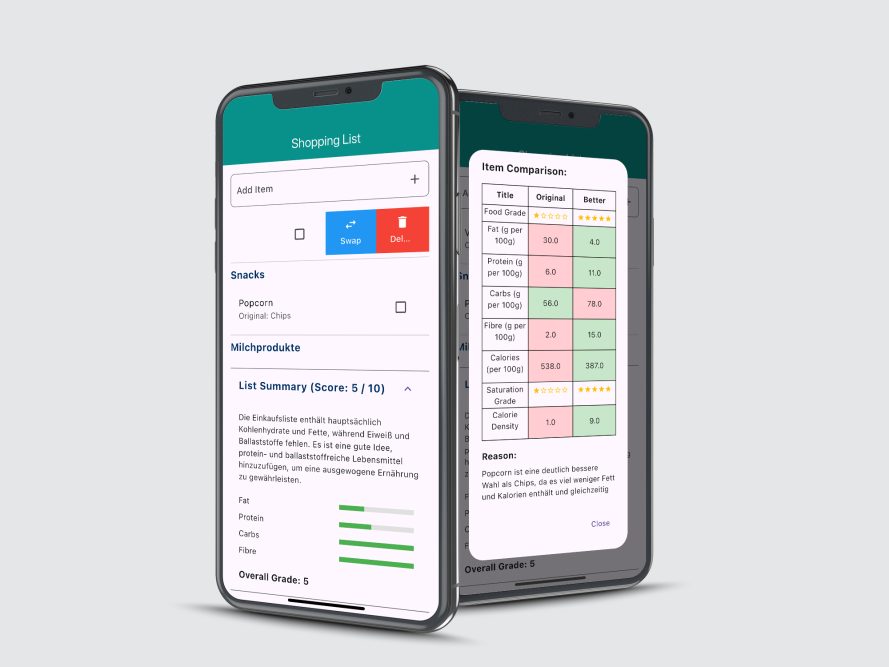
WILLKOMMEN BEI DER
BLE SOLUTIONS GmbH
Ihrem Partner für fortschrittliche KI-Anwendungen, die Ihre Einkaufs - und Arbeitsprozesse revolutionieren.

BetterBites
Die App analysiert Lebensmittellisten, um energiereiche, ballaststoffarme und verarbeitete Produkte zu identifizieren, sie in Lebensmittelgruppen zu kategorisieren und gesündere, funktional gleichwertige Alternativen vorzuschlagen, die auf Forschungsergebnissen basieren, die Sättigung, Ballaststoffe und eine geringere Kaloriendichte betonen. Darüber hinaus bietet es ernährungswissenschaftliche Erkenntnisse und Verhaltensanregungen, um die langfristige Annahme gesünderer Essgewohnheiten zu fördern.
GefahrCheck
GefahrCheck zielt darauf ab, die komplexe und zeitaufwändige Bürokratie zu lösen, die von den deutschen Arbeitssicherheitsbehörden gefordert wird. Unsere Plattform vereinfacht die Einhaltung von Vorschriften, indem sie den Nutzern einen benutzerfreundlichen Fragebogen zur Verfügung stellt, um Sicherheitsdokumente zu erstellen, die auf ihre Branche zugeschnitten sind. Mit automatisierter Dokumentenerstellung, Konformitätssicherung und Benutzerfreundlichkeit hilft GefahrCheck KMUs, HR-Managern und branchenspezifischen Unternehmen, die Einhaltung der deutschen Arbeitsschutzvorschriften sicherzustellen – alles in weniger als 10 Minuten.

AI APPS MADE IN GERMANY
KONTAKTIERE DIE ZUKUNFT

